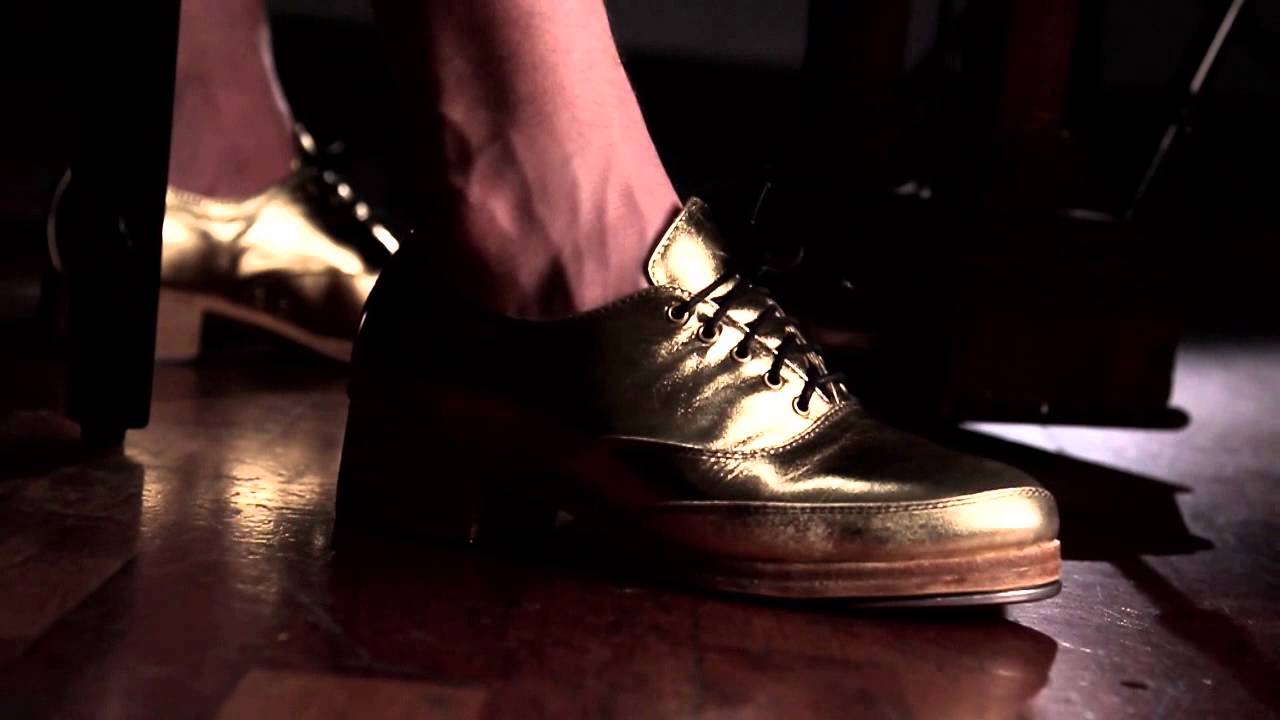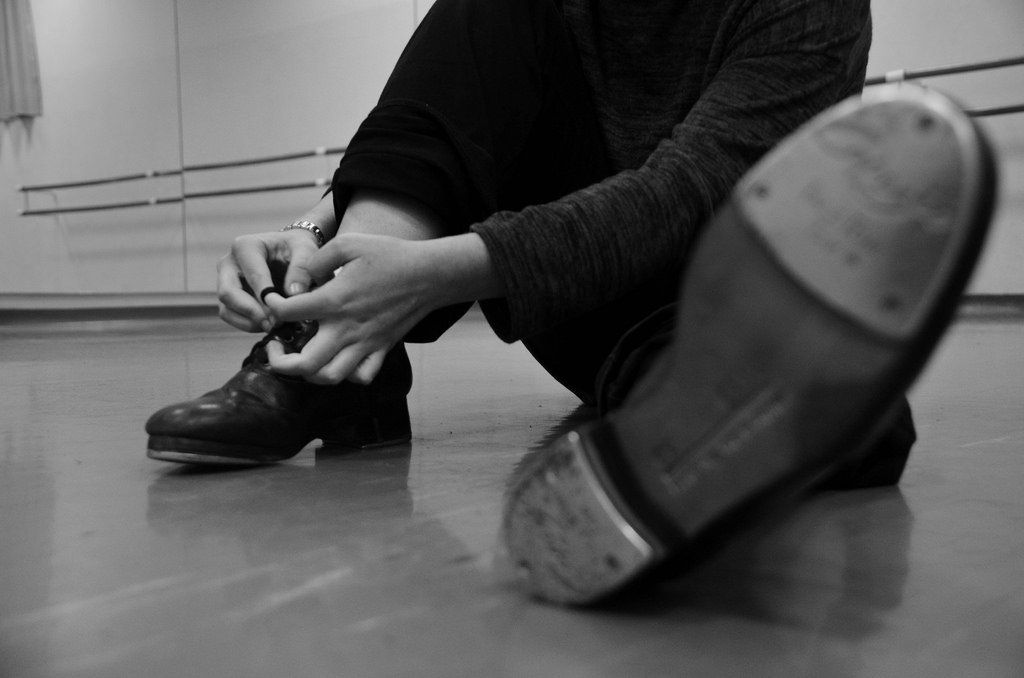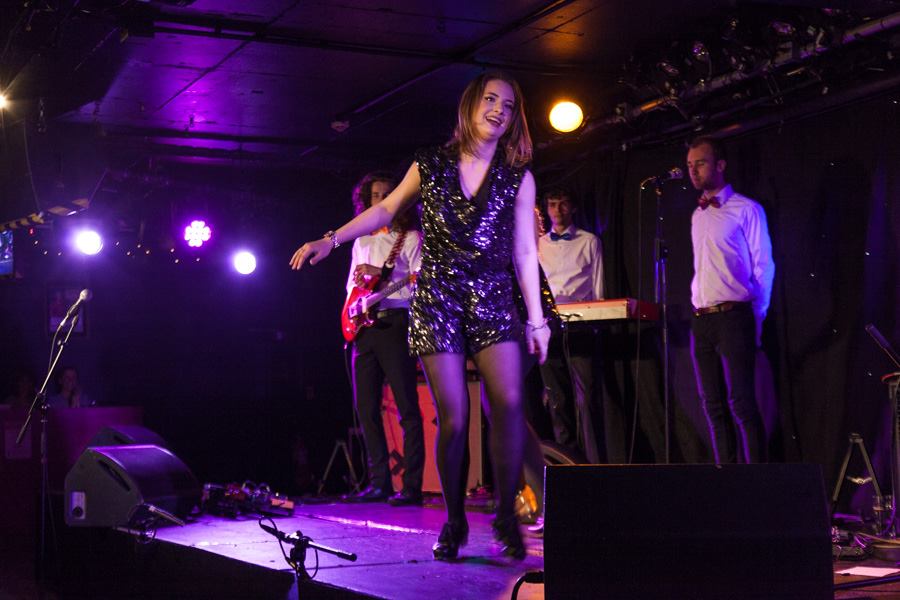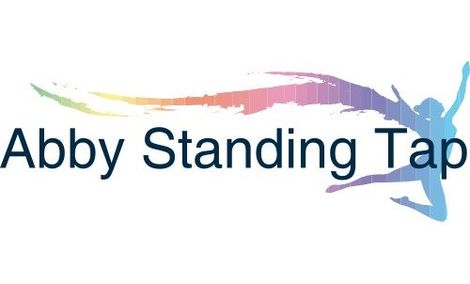Anatomy of a tap shoe
- By david standing
- •
- 28 Dec, 2016
- •

When buying tap shoes, it's important to consider how they sound as well as how they look and fit. Tap shoes are made from leather, canvas or plastic. Soles, which are made of leather or suede, can be either split, providing more flexibility, or full. Heels are usually one or more inches high. Among the new innovations in tap shoe styling is the tap sneaker.
Further considerations include how much room you want to leave for your toes, how tight or loose you like your shoe to fit and how high you want the back of the topline to raise up. Knowledge of the different designs of tap shoes, plus your own awareness of what you consider comfortable, will make the task of buying tap shoes a painless one. Literally.
Here is a short summary on different shoe terms, explaining what they are and how they relate to choosing a tap shoe:
Heel – The large heel at the back of the shoe can also be modified for sound and comfort. A plastic heel, found on most entry level tap shoes, is inexpensive, but has a poor sound quality. A thick leather heel will produce a rich, deep tone, though the higher the heel, the more pressure to the front of the foot, which could end up being responsible for discomfort while dancing.
Pattern – The pattern of the shoe, or how the housing material is cut, should be taken into consideration for style and function. The cut of the shoe is important when considering the length and width of your foot. Pay attention to how the pattern is stitched together. More stitching can mean greater durability, while less stitching will mean a more flexible shoe.
Toe Box – A toe box is a reinforcement of the area that houses the toes and can be useful for tap dancers that dance forcefully and/or do a lot of work with the tip of their toe. However, a reinforced toe also means less flexion in that part of the shoe and compacted toes can be painful, in which case a soft leather toe may be more desirable.
Topline – The top edge of the sides and back of the shoe is the topline. A lower top line will enable greater ankle flexibility, while a higher top line will promote ankle stability. The topline can be padded to prevent painful chaffing where it meets the skin, or notched out in the back to give extra room to the Achilles tendon.

1. Dance shoes
Of every sort! Especially when going to an audition, it is important to bring a variety of shoes. In addition to your basic ballet slippers or jazz sneakers, make sure to pack shoes for all the speciality dance forms you can do, such as tap or pointe work. You never know what kind of dancing you'll be asked to perform. A choreographer may suddenly want to see a different style, even if it wasn't specified in the audition notice, especially if your resume indicates that you can do it. And ladies, always have something with a heel.
2. Extra tights, leotard, and warm-ups
In case of tears, runs, stains, or excessive sweating, you want to have a backup pair of tights and a clean leotard. And as temperatures in studios and theatres are unpredictable and can vary widely, it is important to have warm-up clothes that you can layer on top and remove easily.
3. Hairbrush, comb, elastic ties, barrettes, pins, and hairspray
Classical dancers in particular need to be meticulous in sporting a neat hairstyle that will stay in place and not interfere with the look or execution of their movements. Also, there is frequently a dancer who forgets, loses, or breaks her hair tie, and it looks good for your professionalism and preparedness when you can be there with a spare elastic or barrette to offer.
4. Towel
Even in cold weather, dancers sweat, often profusely. Particularly when doing partner work, you will want to periodically wipe the perspiration off your body, as overly sweaty skin can be dangerous when doing lifts. (You may also want to pack an additional clean towel to use after showering.)
5. Deodorant
No one likes working with a performer who stinks up the studio.
6. Perfume or cologne
On those busy days when you don't have time to shower after rigorous classes or rehearsals, a quick squirt of a mild cologne can make you feel and smell fresh.
7. Antiseptic wipes
Good for cleansing a minor cut or scrape or even just dirty hands, particularly when it's inconvenient for you to leave the studio or stage area.
8. Antibiotic ointment
To prevent infection, you should apply something like this immediately after cleansing any kind of cut, scrape, or tear of your skin.
9. Plasters
A large assortment of these is always important!
10. Breath fresheners
A courtesy to your fellow performers and to make a pleasant impression on anyone to whom you may be speaking at an audition.
11. Makeup bag
In case you need to re-apply makeup to go to an audition after class or rehearsal, or at auditions if you need to repair smears, smudges, etc.
13. Plastic water bottle
It is vital that you stay hydrated during long days of rehearsing or auditioning, and if you can't get out to purchase more beverages, it's smart to have a plastic bottle that you can easily refill from a water fountain or sink. Warning: Never carry glass bottles in your dance bag. Should they break, no matter how well you think you've cleaned out your bag, tiny glass shards may still be in there that could seriously hurt you if they got into your clothes or shoes.
14. A healthy snack
Most dance nutritionists advise eating small amounts of food periodically throughout the day. So especially on those days when you're not sure when your breaks will be, or when you are going to an unfamiliar neighbourhood and don't know what the food purchasing options will be, you should be sure to have a healthy snack in your dance bag. Also, it's usually less expensive to bring your own snacks from home on a regular basis. The most recommended snacks for working dancers are nuts and fruit.
15. Plastic bag
For wet dance clothing, towels, etc.
16. Notebook and pen
You never know when you'll need to record an important piece of information.
17. Extra photo and portfolio
Even if you're not going to an audition, you never know who you may run into.

Tap dancing is a lively and entertaining activity that transforms the dancer from a mere performer into a fully-fledged percussive instrument. Here’s my guide on how tap dancing could be the exercise to get you on the road towards health and fitness:
Key fitness benefits of tap dancing
Tap dancing has many key health and fitness benefits, in addition to those already associated with dance exercise. Benefits of tap dance include the following:
Boosting cardiovascular performance - If performed at a high intensity for 15 to 30 minutes, tap dancing offers great exercise for the cardiovascular system, working out the heart and lungs so they function more efficiently. Strong CV performance is vital to ensure that muscles are supplied with a steady flow of oxygen. Tap dance provides a great way of developing this system.
Toning the leg muscles through tap dance - If your legs currently resemble trembling slithers of jelly, wobbling at the slightest hint of movement, it might be an idea to get into tap dancing. Tap offers a great way of toning your lower-body muscles by optimizing the thighs and quads.
Reducing the risk of high blood pressure - If you suffer from sky-high blood pressure, tap dancing could offer an effective way of bringing it back down to earth. Tap dancing gets blood flowing around all the body’s major muscle groups, causing arteries to dilate and contract more effectively.
Fighting fat through tap dance -
If you’ve
been trundling on a treadmill for what feels like an eternity, maybe it’s
time to try something new. Tap dancing is a surprisingly effective
activity if you want to burn calories quickly. Depending on the intensity
of your tap workout, anywhere between three and four hundred calories can
be burnt off.

